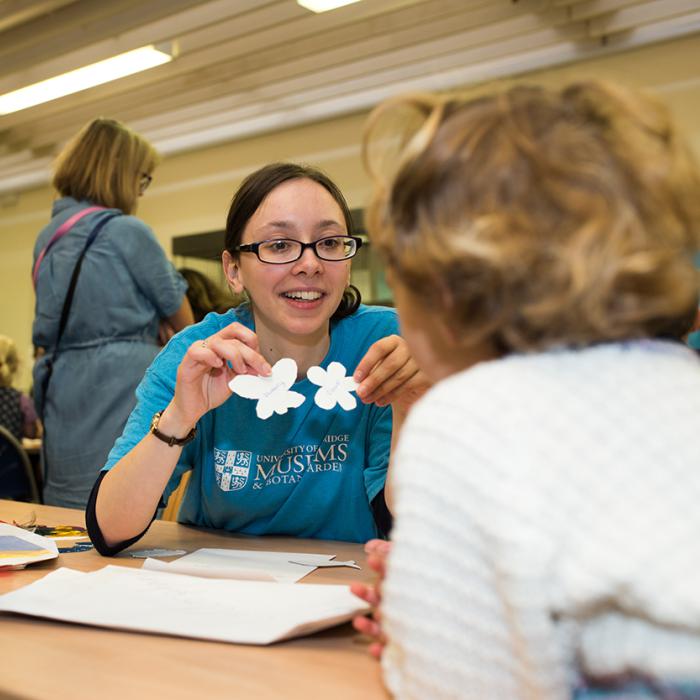Join art historian and curator Dr Amy Tobin, at Murray Edwards College, as she guides a conversation between Dame Marina Warner – historian, mythographer, author and art critic – and special guests soon to be announced.
Presented in collaboration with The Women's Art Collection.
Students are eligible for free tickets for this event - please contact tickets@museums.cam.ac.uk to book these.
Explore how themes of spirituality and technology are closely woven together throughout 'William Blake’s Universe' and 'The Goddess, the Deity & the Cyborg' exhibition at Murray Edwards College.
Presented in collaboration with The Women's Art Collection.
Students are eligible for free tickets for this event - please contact tickets@museums.cam.ac.uk to book these.
Taking inspiration from ‘William Blake’s Universe’ and ‘The Goddess, the Deity & the Cyborg’ at Murray Edwards College, this workshop draws upon contemplative practice and cross-genre techniques.
Presented in collaboration with The Women's Art Collection.
Students are eligible for free tickets for this event - please contact tickets@museums.cam.ac.uk to book these.
This reading group brings together the visionary writings of William Blake and ecofeminist, activist and artist Monica Sjöö to explore the role of spirituality and belief in committed art practices.
Image: Detail of William Blake, ‘Albion's Angel rose / Europe A Prophecy’, 1794-1821 © The Fitzwilliam Museum, University of Cambridge.
Animals don’t do sexual identity; they just do sex.’
From same-sex sexual behaviour in giraffes and penguins to the scientists working in the field of zoology. How do the labels and categories we give animals affect the way we interact with the natural world?
Our volunteer guides share their personal selection of fascinating stories about gender and sex in the animal world at the Museum of Zoology.
Important Information
Animals don’t do sexual identity; they just do sex.’
From same-sex sexual behaviour in giraffes and penguins to the scientists working in the field of zoology. How do the labels and categories we give animals affect the way we interact with the natural world?
Our volunteer guides share their personal selection of fascinating stories about gender and sex in the animal world at the Museum of Zoology.
Important Information
Animals don’t do sexual identity; they just do sex.’
From same-sex sexual behaviour in giraffes and penguins to the scientists working in the field of zoology. How do the labels and categories we give animals affect the way we interact with the natural world?
Our volunteer guides share their personal selection of fascinating stories about gender and sex in the animal world at the Museum of Zoology.
Important Information
Visit the Museum of Zoology after hours for animal-themed board games. Grab a drink, play strategy games, create canine chaos or battle to be the best at Hungry Hungry Hippos. Meet the team from Waterstones Cambridge and try out some of their animal related games too!
Tickets are £5. Bookings are now live - click here to book your ticket.
Age 18+
Bar open and snacks available to buy on the night.
Are you a group of creative practitioners who value community and socially engaged practice? Do you enjoy interacting with a diverse range of people? And engaging them with big issues in fun and creative ways that are meaningful to them?
Stuck trying to get your students to write about art? Secondary and sixth form art teachers, come and learn some methods to kick start the process with writer and facilitator Hannah Jane Walker.
Exploring artworks from the Kettle’s Yard house and collection, teachers will have the opportunity to connect, investigate, interpret, analyse and share ideas and approaches to responding and writing about art; with the aim of creating their own toolkits to adapt and use in their own classroom settings.

